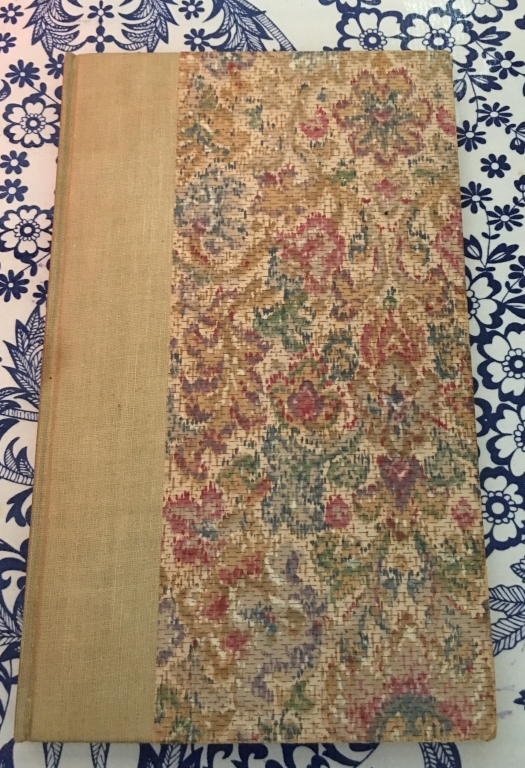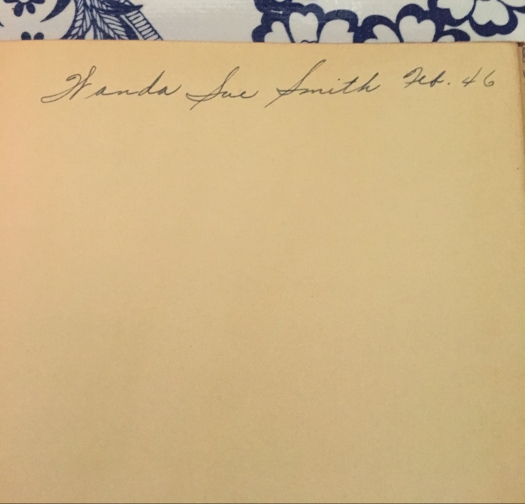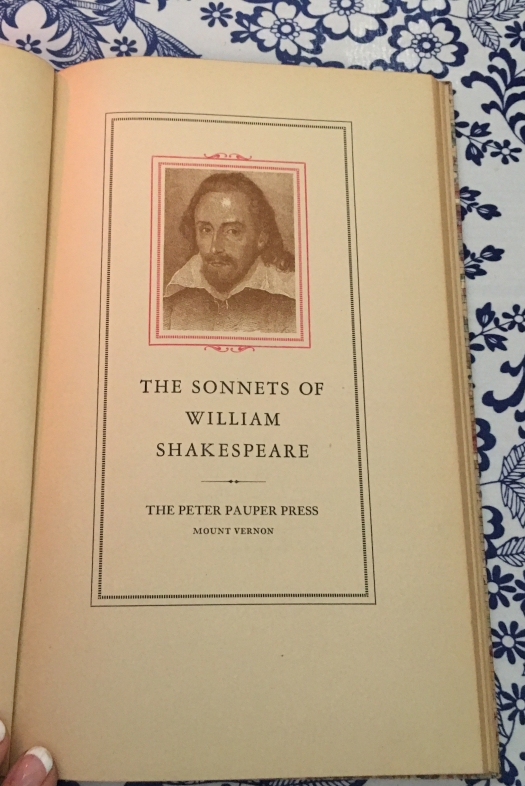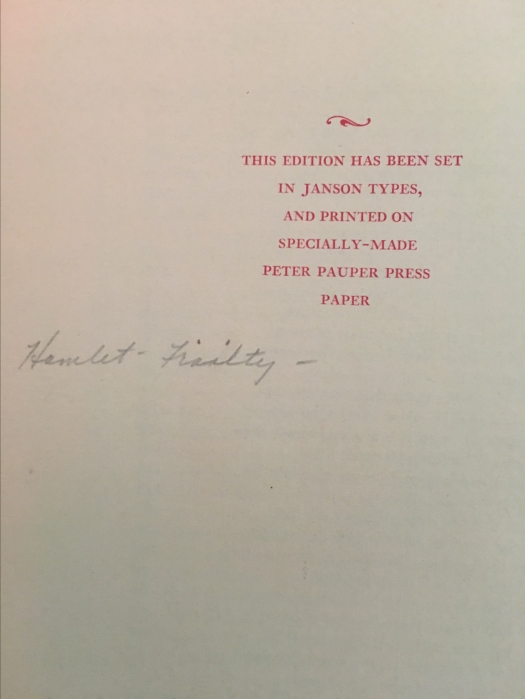My grandmother grew up on a cotton farm in Greer County, Oklahoma. Her father was the first to use irrigation in the county. She was the middle child of three. She attended the University of Oklahoma in Norman where she studied literature and met my grandfather. She worked as a secretary for many years before becoming a home maker.
Though my grandmother appeared to live a life typical of her time, she carried progressive ideals that have transferred down through three generations. My grandmother believed in being educated and in being well read, despite being a woman born in 1925. (She was also an advocate of bilingualism and wanted her children to learn French. Though her children never secured this chance, my sister and I did because of the importance she placed on being bilingual.) These ideas are immortalized in an old book of hers that rests stiffly on a stack of much newer titles in a small wooden cabinet.
The book is sheathed inside a decaying gray dust jacket, taped at various points in its life. The front and back cover of the book are dingy, but intact, with only some fraying at the corners. It’s obvious she read the entire volume, as she left notes throughout in an extinct antique cursive. The publisher is The Peter Pauper Press, the city of publication is Mount Vernon. There is no date accept for a handwritten note on the flyleaf of the book that reads Wanda Sue Smith Feb 46. (What a name, right?!)
A quick look at the publisher’s website revealed that, in 1928 at the age of 22, Peter Beilenson began the printing company in his father’s garage. According to Beilenson’s son, the printer produced books “that even a pauper could afford,” despite being very finely crafted, displaying the work of many “acclaimed artists,” and being printed on hand-made paper (Quote source here). In fact, the last page of my grandmother’s book claims that the text is printed on “specially-made Peter Pauper Press Paper.” This “discount edition” seems to resonate with my grandmother’s modest rural upbringing and lofty literary ambitions. In 1935, the Peter Pauper Press was moved to Mount Vernon. Between this time and 1946, my grandmother’s volume of Shakespeare’s Sonnets was born. (All information about the publisher can be found here.)
In 1972 my grandmother died of lung cancer (scarcely 26 years after her first read of Shakespeare’s Sonnets). She had been a smoker all her life. She left behind her three children, one of which was my mother (only 17 at the time). Her book of Sonnets connects her children, grandchildren, and great grandchildren to a deeply private inner life, one that kept the gravity of her illness a secret until the very end. It is a treasured family relic, that I am honored to inherit.





That is such a wonderful thing to have and treasure! Your Grandmother sounded like a very intriguing person indeed! I love Shakespear and all his works. I’m somewhat of a thespian (Theatrical lover) myself. That is such a lovely book, the binding and paper look absolutely beautiful!
I was curious.. Do you happen to know where the best place to research an old book is? I love collecting old antique books from yardsales or other places and I’ve found several that I cannot find any leads as to where they were published or how old they are. (Some of them are missing their trademarks for some reason) Have a blessed day! 🙂
LikeLike
Thank you for the comment! She was a very interesting person, I wish I’d have met her. But it’s nice to have these types of relics to remember her by. Shakespeare is amazing and his sonnets entertain me and confuse me all at once (haha)!
Hmmm…. that’s a tough one. I would look the books up on a website like abebooks (https://www.abebooks.com/books/rarebooks/). You can search the title, author, any keywords regarding binding (https://www.abebooks.com/books/rarebooks/collecting-guide/understanding-rare-books/understanding-bindings.shtml) or font (if you discover where the book was published, I’d google popular fonts in said country), and the date range of publication. For those books that you aren’t sure of the date of publication, I would start with the date of original publication and then search 10 year age ranges until you start seeing similar books. That being said, if the original was published more than 200 years ago, I’d start in the mid to late-19th century (unless the binding type gives you a general idea of date of publication).
I hope this helps!
LikeLiked by 1 person
Thank you so much!! I’ll be sure to look into all of that! Haha. Yes, Shakespeare is always amazing yet very confusing at the same time. 🙂
LikeLike
No worries!! I hope you get some leads on your books!
LikeLiked by 1 person
Thank you!!! 😀
LikeLike